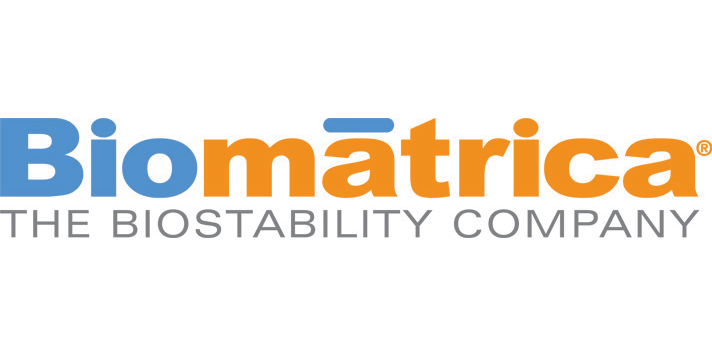Other Track AgendasBiofluid Biopsies | Companion Diagnostics |

Monday, 27 October 201408:00 | Conference Registration and Breakfast | |
Session Title: Circulating Biomarkers for the Development of Biological Fluid-based Biopsies |
| | |
Session Chairman: Klaus Pantel, Ph.D. |
| | 09:00 |  | Keynote Presentation Blood-based Detection of EGFR Mutations is Predictive of Survival Outcomes in Patients Treated with First-line Erlotinib Intercalated with Chemotherapy
Walter Koch, Vice President, Roche Molecular Systems, United States of America
Tarceva is approved for first line use in NSCLC patents whose tumors have been shown to have activating mutations in the EGFR receptor, usually assessed with FFPE samples by PCR tests like the cobas® EGFR Mutation Test. The ability to accurately and sensitively detect EGFR mutations from blood (so-called liquid biopsy) could provide an alternative to biopsy tissue for initial therapy selection. Moreover, quantitative assessment of dynamic changes of EGFR mutations in plasma could be an indicator of initial treatment response, disease progression, and development of resistance mutations (eg T790M). Retrospective analysis of 238 matched tissue and blood samples from the FASTACT2 clinical study using the cobas® EGFR mutation test and the cobas® EGFR blood test (in Development) has shown high concordance of EGFR mutational status between tissue and blood, with comparable prediction of PFS and OS. Further, a drop in plasma EGFR mutations to undetectable at treatment cycle 3 was associated with significantly longer OS compared to any detectable plasma EGFR mutations. In a separate collaboration, measurement of plasma EGFR mutation levels every 4 weeks during erlotinib treatment provided evidence for initial treatment response, as well as disease progression and the emergence of the T790M resistance mutation as early as 11 months before clinical disease progression. These results suggest the use of cell free DNA in plasma to assess EGFR mutation status may be a feasible alternative in those patients for whom a tumor biopsy cannot be obtained. Additionally, dynamic changes in plasma EGFR mutation levels may be predictive of clinical outcome, including disease progression and identification of specific resistance mechanisms. |
| 09:45 |  | Keynote Presentation Next Generation Sequencing for Clinical Applications: Challenges in Developing Clinical Tests
Martin Siaw, Associate Scientific Director, Quest Diagnostics Nichols Institute, United States of America
Next Generation Sequencing has evolved very rapidly and is now used for molecular testing in clinical laboratories This powerful technology offers many exciting opportunities for use in clinical testing. However, NGS also presents many challenges as well. These challenges include the differences between research and clinical labs, and the rapid evolution of platforms, protocols, and reagents. There is a need to recognize the NGS challenges that are specific to CLIA lab environments and to identify some of the considerations that are needed when developing and validating clinical NGS tests. Some specific clinical applications will be presented. |
| 10:30 | Coffee Break, Networking, Exhibit and Poster Viewing | 11:00 |  | Keynote Presentation From Biomarkers to Diagnostics: Personalized Medicine in Hepatocellular Carcinoma
Oscar Puig, Biomarker Leader, Hoffmann La Roche, United States of America
The development of personalized therapies for hepatocellular carcinoma (HCC) has been challenging because of the complexity and heterogeneity of this disease. We will present the biomarker analysis of a global phase II clinical trial with an immunotherapy targeting glypican-3, a well-known prognostic factor in HCC. Our research identified a potential biomarker that could be used to select patients benefiting from this therapy. We will show analyses results as well as assay development process leading to biomarker validation. |
| 11:45 | Detection of Circulating Tumor DNA by Deep Sequencing
Maximilian Diehn, Assistant Professor, Stanford University School of Medicine, United States of America
I will describe the development and application of CAPP-Seq, a deep sequencing-based method for ultra-sensitive and specific detection of circulating tumor DNA that is broadly applicable. | 12:15 | Networking Lunch in the Exhibit Hall and Poster Viewing | 13:00 |  Technology Spotlight: Technology Spotlight:
Droplet Digital PCR and the Liquid Biopsy
Dawne Shelton, Senior Scientist, Bio-Rad Laboratories Digital Biology Center
Targeted therapies in many forms of cancer today have allowed unprecedented progress in the treatment of disease. Despite these advances, we currently lack simple, highly sensitive, yet inexpensive methods to follow the progression of disease with associated genomic markers. Some of the current major limitations are: 1) methods to detect, with confidence, mutational loads below 10%, 2) limited amounts of sample (pg-ng range) per biological specimen, 3) diagnostic turnaround time, and 4) cost. Droplet digital PCR is an inexpensive, rapid, and sensitive method for detecting a wide range of mutational loads in FFPE, cell free DNA and tissue. Absolute counting of target molecules enables precise measurement of input and accurate mutational loads without bias. We’ll summarize work covering the tracking of cell-free tumor DNA during patient progression of disease and treatment monitoring, early detection in blood, detection of copy number amplifications in blood, as well as the detection of KRAS mutations using a multiplex screening strategy.
| |
Panel Discussion: Comparison of cfDNA, Circulating RNA, CTCs, and EVs for Developing Biofluid-based Biopsies. Framing the Issues that Need to be Addressed by the Researchers and Industry. |
| | 13:30 | Panel Discussion
Klaus Pantel, Chairman, Department of Tumor Biology, University Medical Center Hamburg-Eppendorf, Germany
Panelists:
Mike Heller, PhD -- University of California, San Diego
Thomas Krahn, PhD -- Bayer Pharma AG
Klaus Lücke, PhD -- Gilupi GmbH
Dave Hoon, PhD -- John Wayne Cancer Institute
Dolores DiVizio, MD PhD -- Cedars-Sinai Los Angeles
Max Diehn, MD PhD -- Stanford University
| |
Session Title: CTCs and Circulating Tumor DNA (ctDNA) for Biofluid-based Biopsies. Addressing the Challenges and Current State-of-the-Art |
| | |
Session Chairman: Martin Siaw, Ph.D. |
| | 14:00 | Capturing and Molecular Analysis of CTCs: Potential as Predictive Biomarkers in Clinical Studies
Thomas Krahn, Head of Global Biomarker Research Department, Bayer Pharma Ag, Germany
Obtaining tumor tissue from cancer patients for diagnosis and biomarker assessment for patient selection is challenging. Circulating tumor cells (CTCs) may represent an attractive alternative as a “liquid biopsy” providing real-time information about the patient’s current disease state as well as response to treatment. However, capturing these rare cells from body fluids is a major challenge that still needs improvement. We are exploring technologies to capture larger amounts of tumor cells and to use their molecular profile to predict response to treatment in early clinical trials. We will present data of a study comparing different CTC capturing technologies. For optimal comparison, CTC preparations from the same patient were used. The required high amounts of sample aliquots and CTCs were obtained e.g. by apheresis. Today’s standard, the CellSearch® system by Veridex was performed and compared with other antigen-based methods and antigen independent methods. Downstream analysis of the isolated CTCs is performed by highly sensitive protein analysis technologies. Limited capture efficiency is tried to be tackled by cultivation of CTCs. Examples of predictive biomarkers based on CTCs capturing and subsequent molecular analysis will be shared and discussed. | 14:30 | Recovery of Pure Tumor Cell Populations using the DEPArray System: Enabling Molecular Profiling and NGS applications to CTCs and FFPE
Farideh Bischoff, Executive Director, Silicon Biosystems Inc, United States of America
Silicon Biosystems has combined the ability to manipulate individual cells using DEP (dielectrophoresis) technology with high quality image-based cell selection to create the DEPArray™ System. This automated platform enables identification and recovery of specific individual cells of interest from complex, heterogeneous samples; enabling analysis of pure cell populations. Given that molecular testing of CTCs and FFPE tissue can often be compromised due to specimen size, heterogeneity, and/or the percentage of normal cells present, we have developed methods that enable reliable recovery of pure tumor cell populations that are amenable to downstream molecular profiling and NGS. We will present results from case studies to support these claims. | 15:00 | Coffee Break, Networking, Exhibit and Poster Viewing | 15:30 |  | Keynote Presentation New Approaches of Next Generation Sequencing of Circulating DNA in Cancer Patients
David Hoon, Professor, Director Department of Translational Molecular Medicine, John Wayne Cancer Institute, United States of America
Circulating-free DNA (cfDNA) has been shown to be useful blood cancer biomarkers over the last decade. cfDNA can be used to monitor tumor progression, tumor response to treatment, and early detection of tumor recurrence. cfDNA biomarkers can occur in different forms such as mutations, amplification, loss of heterozygosity(LOH), methylation, and size integrity. We have shown the clinical utility of all these blood biomarkers in various solid tumors. Over the past years different assay approaches have been employed to detect cfDNA such as PCR based assays. However the major issue has been developing clinical utility for health payer reimbursement. More recently the utilization of Next Generation Sequencing (NGS) has taken the assessment of cfDNA to a higher level of accuracy and sensitivity. We have employed a novel digital NGS approach in collaboration with Guardant Health for ultra-sensitive detection of cfDNA in approximately 2 ml of serum of solid tumors. Studies were designed in solid tumors such as melanoma with paired tumor tissues and serum. NGS was performed at 1000x coverage of the entire panel of 60 genes which allowed accurate detection of mutations/deletions across the complete gene as opposed to single targeted regions of a gene. We demonstrated high correlation of cfDNA to respective tumors and association with clinical tumor progression. The assay is now CLIA lab approved. Currently, we are validating the assay in multi-institute settings. |
| 16:15 | MicroRNAs as Non-Invasive Biomarkers
Martin Beaulieu, Director, Regulus Therapeutics Inc, United States of America
Recent studies show that miRNAs are released from tissues into the circulation and the levels of specific miRNAs can be used as surrogates for the disease tissues. miRNAs are highly stable in the circulation due to the fact that they are protein bound and/or encapsulated in vesicles. We have developed and optimized a high-throughput platform that consistently measures over a hundred miRNAs from less than 200 microliters of serum, plasma and whole blood. We also developed robust methods enabling miRNA profiling from other biofluid types such cerebrospinal fluid and urine. Using this optimized platform, we conducted large-scale profiling studies to identify miRNA biomarkers in a wide variety of disease conditions. We found distinct microRNA signatures distinguishing patients with multiple sclerosis from normal volunteers, patients with high risk of metastasis of colorectal cancer and other malignant diseases. We are also developing a microRNA signature that may be both prognostic and predictive for patients with rheumatoid arthritis. | 16:45 |  | Keynote Presentation Rapid Isolation and Detection of DNA/RNA Biomarkers from Blood and Plasma “Key to Liquid Biopsy Diagnostics”
Michael Heller, Professor, Dept Bioengineering, University of California-San Diego, United States of America
The analysis of circulating cell free (ccf) DNA and RNA continues to become more widely used for cancer diagnostics and management. The parallel development of new methods that allow rapid isolation directly from small amounts of blood or plasma will also be necessary to advance liquid biopsy point of care (POC) diagnostic applications. We have now demonstrated a dielectrophoretic (DEP) based approach that allows cfc-DNA and RNA biomarkers from chronic lymphocytic leukemia (CLL) patients to
be isolated in about 10 minutes directly from a small volume (25ul) of patient whole blood or plasma.
|
| 17:30 | | 18:15 | Networking Reception: Premium Beers, California Wines, and Dinner for All Speakers, Delegates, and Exhibitors. Enjoy an Awesome Evening and Network with your Fellow Delegates. | 20:00 | Close of Day 1 of the Conference |
Tuesday, 28 October 201408:00 | Breakfast and Networking | |
Session Title: CTCs, Extracellular Vesicles (EVs), and Circulating Nucleic Acids--Potential for Biofluid-based Biopsy Development |
| | |
Session Chairman: Jan Lötvall, M.D., Ph.D. |
| | 08:30 | CTC Applications in Clinical Development: CTC Enumeration, Biomarker Status and Single Cell Analysis
Edith Szafer-Glusman, Senior Research Associate, Genentech Inc, United States of America
| 09:00 | .png) | Keynote Presentation Circulating Tumor Cells (CTCs): From Enumeration to Comprehensive Characterization
Nicholas Dracopoli, Vice President/Head, Johnson & Johnson, United States of America
Inexpensive, minimally-invasive Dx tests that can be used repeatedly throughout the course of disease are critically important for the effective development of targeted therapies in Oncology. Circulating Tumor Cells (CTC) are the only tumor cells that can be accessed in a cancer patient without requiring an invasive procedure. Current FDA approved uses for CTCs are limited to monitoring response to therapy and prognosis in patients with metastatic breast, prostate or colorectal cancer by enumerating the total number of CTCs. However, the development of more sensitive and specific methods to capture diverse types of CTCs (epithelial and non epithelial cancers, cancer stem cells, cells undergoing epithelial-mesenchymal transition etc.), and more sensitive analytical methods using much small amounts of nucleic acid or protein templates are both required to enable the comprehensive molecular analysis of CTCS. These data can be used to direct therapy using real-time Dx analyses of the driver mutations and emergent drug resistance in metastatic cancer patients, and provide a new opportunity to improve the outcome of patients with cancer. |
| 09:45 |  | Keynote Presentation Detection of Circulating Tumor Cells…What is the Gold Standard and is There One?
Ruth Katz, Professor of Pathology, Chief Image Analysis Laboratory, Chief Research Cytopathology, MD Anderson Cancer Center, United States of America
The FDA approved technology for CTCs relies on the expression of EpCAM, however, this current assay cannot account for the phenomenon of lineage plasticity or epithelial-mesenchymal transition (EMT) which in turn endows CTCs with stem-cell capabilities and the ability to ultimately initiate macro- metastases by mesenchymal –epithelial transition (MET). Genetic heterogeneity in the context of CTCs will be discussed including automated FISH-based assays for detecting CTCs of different subtypes, including stem cells, mesenchymal and epithelial cells, that simultaneously analyze specific immunohistochemical phenotypes together with genomic instability within the same cell. Using this technology on sequential bloods in patients with early lung cancer, both at base- line and post -surgery, we were able to prospectively follow the phenotypic changes in CTCs. Using an antigen independent assay to analyze genetic markers in peripheral blood mononuclear cells by FISH in patients at risk for lung cancer or with early lung cancer,we have shown a high degree of accuracy to predict the presence of lung cancer in patients versus control subjects. |
| 10:30 |  Technology Spotlight: Technology Spotlight:
Detection and Quantitative Monitoring of Circulating Tumor DNA in Cancer Patients
Jason Poole, Director, Trovagene Inc
An optimized isolation technique for circulating tumor DNA (ctDNA) makes it possible to detect systemically derived ctDNA in plasma and urine. Using a small footprint capture and enrichment technique, we demonstrate the analytical detection and quantification of these tumor fragments down to a sensitivity of less than 0.01%, creating a non-invasive cancer mutation detection platform using massively parallel sequencing techniques. We are using this proprietary technology platform to establish a quantitative correlation between ctDNA and early detection of therapeutic response, resistance and disease recurrence.
| 11:00 | Coffee Break, Networking, Exhibit and Poster Viewing | 11:30 | CTCs and ctDNA as Sample Types: Identification, Enumeration, and Biomarker Analysis, Including High Sensitivity Mutation Analysis Using the CEE-Selector Assay
Lyle Arnold, Chief Scientific Officer, Biocept, United States of America
CTCs and ctDNA promise to be a compelling alternative as well as complementary with solid tumor tissue as a sample type. At Biocept, we are using a patented platform called Cell Enrichment and Extraction (CEETM) for the testing of CTCs. This platform is based on a micro-fluidic capture channel, and associated instrumentation that is manufactured by the Company. We can readily capture, enumeration, and interrogate CTCs for surface proteins using immunocytochemistry (ICC), conduct fluorescent in-situ hybridization (FISH) analysis, and at the same time, interrogate samples for mutations using a unique PCR method called CEE-SelectorTM. The CEE-SelectorTM, which has sensitivity of better than 1:10,000 (mutant:wild-type), is very effective for the analysis of genetic mutations associated with CTCs and ctDNA. Using these methodologies, a CTC assay has been commercially launched for breast cancer, OncoCEE-BR, and a series of other assays for lung, gastric, colorectal, melanoma, and prostate cancer will be introduced in the next two years using a combination CTCs and ctDNA as the sample types. | 12:00 | In vivo Isolation of Circulating Tumor Cells as Liquid Biopsy – Overview of Potential Applications as Companion Diagnostic for Target Therapies
Klaus Lücke, CEO & Founder, GILUPI GmbH, Germany
Circulating tumor cells (CTCs) are a promising surrogate marker for disease progression and response to therapy as they can be used as liquid biopsy. CTCs indicate tumor cell extravasation. They are important prerequisites for formation of metastasis. Early disease diagnosis as well as disease monitoring can be provided by the detection and characterization of these rare cells. The GILUPI CellCollector™ offers medical personnel at any point-of-care with the unique opportunity to enrich CTCs in vivo. | 12:30 | Lunch, Networking in the Exhibit Hall, and Poster Viewing | 13:15 |  Technology Spotlight: Technology Spotlight:
Detecting Circulating Nucleic Acids by Fluid Biopsy™ and Profiling Somatic Tumors with Next-Gen DNA Sequencing
Jay Therrien, Vice President, Rain Dance Technologies
RainDance Technologies is enabling ground-breaking research with a portfolio of picodroplet-based products for elucidating genetic targets for disease risk predisposition, initial detection, pathology and residual disease research. Hear about how the new ThunderBolts™ Cancer Panel is being deployed to rapidly detect and cost-effectively profile tumor samples and the ultra-sensitive RainDrop™ Digital PCR System is being used for follow-up mutation validation. This combination is compatible with all types of DNA, including FFPE, tissue and plasma and features a streamlined workflow and low overall cost per sample.
| 13:45 |  Technology Spotlight: Technology Spotlight:
Stabilization of Circulating Tumor Cells (CTC)
Pankaj Singhal, Senior Vice President, Corporate Development & Operations, Biomatrica
Detection of circulating tumor cells in blood has become an invaluable tool in the clinical diagnosis and monitoring of various cancers. CTCs are rare, fragile and susceptible to degradation, which may immediately occur from the time of sample collection and prior to its arrival in clinical diagnostic laboratories. Thus, a persistent critical need exists in the research, diagnostics and therapeutics fields for methods that improve cell integrity and longevity of CTCs.
| |
Session Title: Emerging Themes in Circulating Biomarkers and Biofluid-based Biopsies-Applications and Deployment in the Clinic |
| | |
Session Chairpersons: Dolores DiVizio, M.D., Ph.D. and Ken Witwer, M.D., Ph.D. |
| | 14:15 | Exosomes and Other Extracellular Vesicles as Future Extracellular RNA Biomarkers
Jan Lötvall, Professor, University of Gothenburg; Founding President of ISEV; Editor-in-Chief, Journal of Extracellular Vesicles, Sweden
Most cells have the capacity to release different types of extracellular vesicles, that typically have an intact cell membrane which protects the cytoplasmic vesicular cargo. These extracellular vesicles include exosomes, microvesicles as well as apoptotic bodies, where the exosomes are the true nano-sized vesicles, with a diameter of 40-100 nm. In 2007, we discovered that exosomes released from mast cells contain both microRNA and mRNA, which subsequently can be transferred from one cell to another to mediate biological effect. Subsequently, it has been shown that exosomes are present in all human body fluids investigated, including serum, plasma, saliva, semen and breast milk. Importantly, the RNA content in exosomes changes when the cells undergo for example oxidative stress, or are transformed to malignant cells. Importantly, different extracellular vesicles contain different RNA species, as well documented in different studies using different models. Therefore, cell may mediate multiple RNA-mediated signals by shuttling also other extracellular vesicles than exosomes between cells. Also this aspect will be discussed during the presentation. The exosomal RNA content is also being investigated as biomarkers for different diseases, including malignancies. Several companies are currently investigating the RNA content of exosomes and other extracellular vesicles, to diagnose diseases and to monitor the effects of therapy. Lastly, exosomes or similar vesicles could be utilized to deliver therapeutic RNAi molecules to diseased cells / tissues. Thus, siRNA or other RNAi molecules could at least in theory be loaded into exosomes and be delivered either directly into a tumor area to treat that tumor, or systemically if harboring targeting molecules. Exosomal shuttle RNA promises to be one of the most exciting research field in biology and medicine over the decades to come. | 14:45 | Large Oncosomes and Other Extracellular Vesicles: A Source of Cancer-derived Circulating Markers
Dolores Di Vizio, Professor, Cedars Sinai Medical Center, United States of America
We recently discovered that rapidly migratory, “amoeboid” prostate cancer cells shed large (1-10µm diameter), bioactive extracellular vesicles (EVs), termed large oncosomes. Large oncosomes can be selectively isolated by differential centrifugation and/or by filtration, and analyzed by immuno-flow cytometry with specific size beads in vitro and in vivo. Their quantitation in the circulation reports metastatic disease in patients and animal models (Cancer Res. 2009; Am J Pathol. 2012). In order to profile large oncosomes at a molecular level, we performed next generation sequencing (whole genome and RNA-seq) and quantitative proteomics studies (LC-MS/MS SILAC). We demonstrated the feasibility of RNA-seq analysis of EVs purified from human platelet-poor plasma and have obtained a minimum of 50 million paired end reads per sample. After mapping to RefSeq-annotated human gene loci and quantification as FPKM (fragments per kilobase of exon per million fragments mapped), a number of transcripts were identified as differentially expressed between patients with breast cancer and normal subjects (FDR <0.05). We also performed whole genome paired-end sequencing (Illumina) of large oncosome-derived DNA and demonstrated that single nucleotide mutations, insertions/deletions, and translocations present in donor cells can be identified in large oncosomes. Finally, SILAC profiling of tumor cell-derived large oncosomes in comparison with smaller EVs including exosomes demonstrated enrichment, in large oncosomes, of proteins functionally involved in cell cycle regulation, anti-apoptosis, and cell motility. Among the classes of proteins often identified in EVs, a cohort of these “exosome” biomarkers were significantly enriched in large oncosomes. These findings identify large oncosomes as a novel class of EV that contains clinically relevant biomarkers. | 15:15 | Coffee Break, Networking, Exhibit and Poster Viewing | 15:30 | Extracellular Vesicles and RNA of the Cervico-vaginal Compartment in Health and Retroviral Infection
Kenneth Witwer, Associate Professor, Johns Hopkins University School of Medicine, United States of America
Molecular components of cervico-vaginal secretions may predispose to or protect against infection by HIV and other pathogens. Investigating cervico-vaginal lavage (CVL) samples from a sex trade worker cohort, nanoparticle tracking analysis indicated significant differences in extracellular vesicle abundance in samples from HIV-infected women compared with samples from uninfected individuals. Additionally, profiling of extracellular RNA in CVL and the extracellular vesicle fraction by a medium-throughput stem-loop/hydrolysis probe qPCR platform revealed that several small RNAs, including miR-223, were differentially expressed in health and HIV infection. Our work and a previous report showed that this miRNA hinders HIV replication in CD4+ T-cells and monocyte-lineage cells. To trace the path of specific RNAs from cellular origin to availability at the environmental interface, non-human primate RNA from tissue and vaginal swab samples were compared with lavage RNA. This work demonstrates that extracellular vesicles can be recovered from the vaginal compartment, carry cargo important in innate defenses against infection, and may provide markers of mucosal health. | 16:00 | Isolation, Visualization and Characterization of Exosomes Found in Human Follicular Fluid: A Potentially Important Mechanism for Intra-Follicular Cell-Cell Communication
Shlomit Kenigsberg, Senior Researcher, Create Fertility Centre, Canada
Follicular fluid (FF) provides part of the microenvironment that regulates oocyte development and thus, may play a critical role in oocyte fertilization and embryo development. Intercellular signaling between granulosa cells (GLC), cumulus cells (CM), and the oocyte is required for proper folliculogenesis, ovulation, and hormonal secretion. These signals can be mediated by small membranous vesicles called exosomes that are 50-150nm in size and contain a unique repertoire of proteins and microRNAs (miRNAs). The recently discovered tissue and fluid distributions of exosomes elude to their potential biological relevance. Evidence suggests their involvement in cell-cell signaling. Therefore, we hypothesize that exosomes mediate intercellular signaling within ovarian follicles. Our aim was to isolate and characterize both human FF containing exosomes and-exosomes secreted by granulosa cells in vitro, using a variety of biochemical and cell biology techniques. Body fluid extracellular particle isolation techniques, characterization and visualization, as well as their potential as biomarkers for oocyte quality, will be discussed. | 16:30 | Evaluation of EGFR Mutations in Plasma from NSCLC Patients: Utility in Managing Patients on TKI Therapy
Chris Karlovich, Associate Director, Molecular Diagnostics, Clovis Oncology, Inc., United States of America
We are utilizing blood-based molecular testing in patients who have become resistant to first generation tyrosine kinase inhibitors with the goal of enabling subsequent therapy without need for repeat lung biopsy. The utility of plasma-based EGFR mutational analysis will be described in the context of CO-1686, a novel third-generation TKI that selectively inhibits the EGFR activating and T790M resistance mutations in NSCLC patients. | 17:00 | Current Applications of Circulating Tumor DNA Analysis
Theresa Zhang, Vice President, Research Services, Personal Genome Diagnostics, United States of America
Recent technology advances have expanded our abilities to detect circulating tumor DNA from plasma of cancer patients, enabling a wide range of applications including identification of genetic determinants for targeted therapy, evaluation of early treatment response, monitoring of minimal residual disease and assessment of evolution of resistance in real time. This talk will discuss novel applications of ctDNA analysis in clinical and pharmaceutical research settings and highlight the major challenges encountered. | 17:30 | Prospects for Noninvasive Liquid Biopsies in Cancer and Other Diseases
Charles Cantor, Chief Scientific Officer, Sequenom Inc, United States of America
It is now clear that body fluids like blood, urine and saliva contain diagnostically useful nucleic acid molecular markers from remote sites in the body. Noninvasive prenatal diagnostics detecting fetal DNA in maternal plasma has become the standard of care. In this lecture, I will show that similar diagnostics seem possible in cancer and eventually should become possible in many other diseases. Because the markers are present at very low concentrations all markers of interest must be analyzed simultaneously from one single sample. Next generation DNA sequencing works well for this application but is still too costly to make many repeat measurements. Nucleic acid mass spectrometry is a great companion to NGS because these measurements are easy to implement and inexpensive. It should be possible to monitor patients frequently enough by liquid biopsies to create and test dynamical models how how therapy is affecting the disease process. | 18:00 | Close of the Conference. |
|

 Add to Calendar ▼2014-10-27 00:00:002014-10-28 00:00:00Europe/LondonBiofluid BiopsiesSELECTBIOenquiries@selectbiosciences.com
Add to Calendar ▼2014-10-27 00:00:002014-10-28 00:00:00Europe/LondonBiofluid BiopsiesSELECTBIOenquiries@selectbiosciences.com